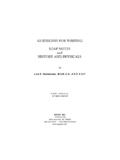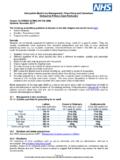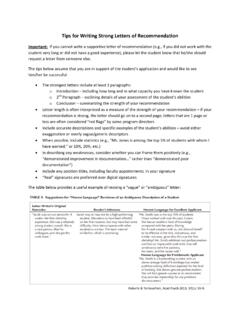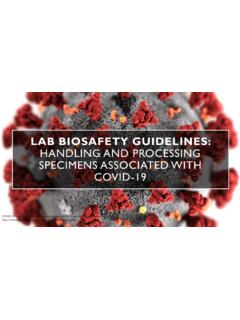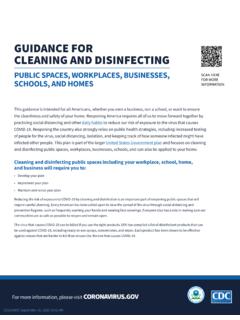Transcription of Adult and Paediatric Resting Electrocardiography (ECG ...
1 Version No.: ; Effective from: 26 November 2012 Page 1 of 15 Printed copies are uncontrolled Document Number # QH-GDL-387:2012 Adult & Paediatric Resting Electrocardiography (ECG) Cardiac Sciences 1. Purpose This guideline provides recommendations regarding best practice to support high quality Resting Electrocardiography (ECG) practice throughout Queensland Health facilities. 2. Scope This guideline provides information for all health practitioners who perform routine Resting Adult and Paediatric ECGs as part of their clinical duties. This guideline does not relate to ECGs for the purpose of exercise stress testing, ambulatory ECG (Holter) monitoring, signal averaged ECG or mobile telemetry.
2 This guideline provides the minimum requirements for recording a routine Resting 12 lead ECG in clinical practice (with variations for right sided, 15 lead, dextrocardia and Paediatric populations). 3. Related documents Policy and Standard/s: Informed Decision-making in Healthcare (QH-POL-346:2011) 1 Procedures, Guidelines, Protocols Australian Guidelines for the prevention and control of infection in healthcare (CD33:2010) 2 American Heart Association (AHA) Electrocardiography Guidelines Part 1 & 2 (2007) 3, 4 ACC/AHA clinical competence statement on Electrocardiography and ambulatory Electrocardiography 5 The Society for Cardiological Science and Technology, British Cardiovascular Society, clinical Guidelines by Custodian/Review Officer: Chief Allied Health Officer Version no: Applicable To: All health practitioners Approval Date: 26/11/2012 Effective Date.
3 26/11/2012 Next Review Date: 26/11/2013 Authority: Chair State-wide clinical measurements network Approving Officer: Chief Allied Health Officer Supersedes: New document Key Words: ECG, EKG, Electrocardiography , electrocardiograph, 12-lead, Resting ECG Accreditation References: EQuIP and other criteria and standards Queensland Health: Adult & Paediatric Resting Electrocardiography (ECG) Version No.: ; Effective from: 26 November 2012 Page 2 of 15 Printed copies are uncontrolled Consensus: Recording a standard 12 Lead electrocardiogram, an approved Methodology. (2010) 6 4. Guideline for performing Electrocardiography (ECG) Emergency Protocol For arrest situations local emergency protocols for Code Blue should be followed.
4 Record an additional rhythm strip if a significant arrhythmia is detected or a longer recording period is required 3, 4, 6 as per manufactures instructions. Identify any changes on the ECG that may require urgent medical attention and if required, seek advice from a senior member of staff while the patient remains connected. Document any cardiac symptoms on the printed ECG and bring to the immediate attention of a senior member of staff 6. Infection Control Procedures Australian Guidelines for the prevention and control of infection in healthcare (2010) 2. Local Hospital and Health Service Infection Control policies, procedures and guidelines. Gaining Consent Gain consent in accordance with Queensland Health s Informed Decision-making In Healthcare Policy 1.
5 Make the patient aware of the requirements of the procedure and what they will be required to do. Offer an option of who performs the test if gender preference is considered an issue, or requested by the patient. Identifying Indications / Contraindications 5 Indications Chest pain suggestive of ischemia Known or suspected arrhythmias Changes in rhythm (eg atrial fibrillation to sinus rhythm, new bundle branch block) Post cardiac arrest/resuscitation Post syncopal episodes to assess arrhythmia ST/T wave changes consistent with metabolic and electrolyte disturbances Preoperative assessment Post insertion of pacemaker (permanent or temporary) Queensland Health: Adult & Paediatric Resting Electrocardiography (ECG) Version No.
6 : ; Effective from: 26 November 2012 Page 3 of 15 Printed copies are uncontrolled Routine requirements Assessment of medications known to cause cardiac arrhythmia Facilities and equipment Room Preparation Ensure that: the patient area and ECG machine are clean and tidy the bed is adjustable and large enough to support the patient s body and limbs 6 the ECG machine is safe and ready to use. The date and time should be correct on the machine there is sufficient stock for performing an ECG including ECG paper, ECG electrodes, towelling, paper, hair removal device, skin prep and cleaning wipes hands are washed 2 staff are aware of the location of the crash trolley and emergency buttons in case of emergency Minimum Equipment The ECG machine requirements include pre-programing the device in accordance with American Heart Association (AHA) specifications 3, 6: Set the low-frequency filter no higher than Hz to avoid distortion of the ST segment.
7 Set the high frequency filter no lower than 100 Hz to prevent loss of high frequency information. Equipment within the room should include: disposable electrode tabs ECG paper skin preparation equipment (hair removal device, cleaning wipes, abrasive tape) adjustable bed / couch that a patient can lie on comfortably (with all limbs Resting on the bed surface) and can be adjusted to the correct height for the person performing the ECG. Training requirements Obtain training to ensure you are proficient in the following areas of skill and knowledge: use of the ECG machine recording of the 12 lead ECG 3 recognition of significant and life threatening arrhythmias appropriate response to significant and life threatening arrhythmias Queensland Health: Adult & Paediatric Resting Electrocardiography (ECG) Version No.
8 : ; Effective from: 26 November 2012 Page 4 of 15 Printed copies are uncontrolled basic life support and cardiopulmonary resuscitation as per Hospital and Health Service requirements. Test Procedure Patient preparation Greet the patient and introduce yourself (name and title) ensuring your ID badge is being displayed. Confirm patient s identity request the patient s full name and date of birth and check the procedure to be performed (asking them if their name is John is not confirming their identity). Explain the procedure in detail (what an ECG is, and that the test is quick and painless). Inform the patient that in order to perform the ECG, unrestricted access to the chest area will be required 6.
9 Obtain informed consent once the procedure has been explained to the patient. Every effort should be made to respect the patient and minimise embarrassment by allowing them to dress and undress in private. The female patient should be covered (gown, sheet or towel) during the procedure to ensure their modesty. The patient should be in a supine position 3, 6. Note: The appearance of the ECG can vary depending on the position of the body. Any changes to a supine position should be documented on the printed ECG 3, 6. The patient should be comfortable and relaxed to achieve a clinically accurate recording with minimal artefact 6. Skin preparation To minimise the skin-to-electrode impedance, and help produce an artefact-free accurate ECG, the following techniques should be utilised to prepare the skin.
10 6 Shave the hair at the electrode placements site if necessary (patient consent required)6. Dispose of any sharps in the sharps container immediately after use as per local Hospital and Health Service guidelines for waste management. Clean the skin this may include washing the area with a mild soap or with an alcohol wipe 6. Confirm with the patient if allergies exist. Exfoliate if necessary with light abrasion using a paper towel, gauze swab or abrasive tape designed specifically for this purpose 6. Care should be taken in patients with sensitive or broken skin. Queensland Health: Adult & Paediatric Resting Electrocardiography (ECG) Version No.: ; Effective from: 26 November 2012 Page 5 of 15 Printed copies are uncontrolled Electrode placement The electrode placement should adhere to the recommendations and guidelines as per the American Heart Association (AHA) to ensure consistency between recordings 3, 4, 6.











